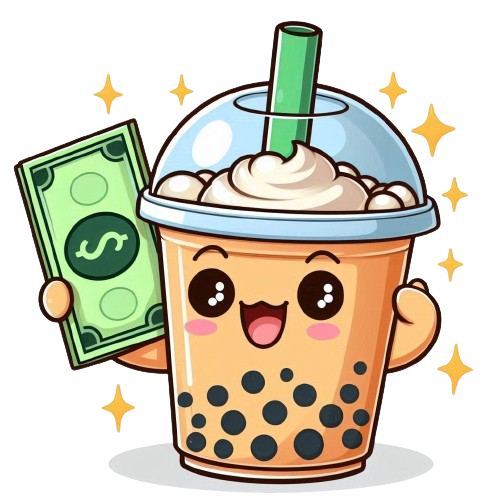Do you have a side hustle?
Side hustles are jobs or activities you take on to earn extra cash outside your main job. With so many options available, you might wonder if they are worth your time and investment. Can side hustles significantly boost your income and provide financial freedom, or are they just another source of stress? Let’s explore whether side hustles can truly make a difference in your life.
(This post contains affiliate links.)
Definition of a side hustle
Let’s have an easy definition: if you have a main job, then any side job you have is considered a side hustle. For example, if you work full time (9-5 Monday to Friday) and drive for Uber on the weekends, then Uber driving is your side hustle. If you are unemployed or a student, then it’s not a side hustle – depending on how many hours you put in, it can either be a freelancing job or your de facto main job.
And there are 2 primary types of side hustles: one is something that you do to make extra cash, and it will just remain a side, and another one is something that you do on the side right now, but there is hope that you will grow it big enough so that one day, it may become your main job or push you towards early retirement. Either type is fine, it depends on your objectives and I am not going to differentiate them in this article.
Why side hustles?
Doing side hustles means extra income, helping you reach your financial goals sooner. Plus, the right side hustle can help you learn new skills or gain job experience.
In my view, I will only do a side hustle if it meets one or more of the following key factors. The more key factors it meets, the better:
- high income for the effort. One way to measure this is to calculate the hourly rate – for example, if it takes you 15 minutes to complete a survey that pays you $10, then your hourly rate is $10 * (60 min/15 min) = $40/hr. Is that a high pay rate? That’s a subjective question, but it’s higher than minimum wage.
- educational. I want to choose something that teaches me a new skill and helps me to reach my goals.
- Low or no upfront cost: Some jobs require a lot of expenses, both upfront and recurring. For example, if I want to drive for Uber but don’t already have an eligible car, then I need to acquire such a vehicle and continuously pay for gas, car maintenance, and commissions.
- not too time-consuming. Again with the Uber example – I can’t imagine spending half a day on my day off (aka Saturday) to drive for Uber, even if I listen to an audiobook the entire way. I consider that time valuable to rest or focus on my main goals. Some of the better side hustles would even be “set-it-n-forget-it”, generating passive income for you without any extra effort.
This rule also applies to creating a startup. Sure the income potential is high, but you will have to spend too many hours building a company, and I do not want to make that sacrifice. - fun, or at least not super boring. It keeps me motivated, not burned out.
My experience with side hustles
I have been working full-time since 2013 and have done multiple side hustles since then, mostly to supplement my income. Notably, I taught children piano (which was my main job from 2009-2013, but it was relegated to a side hustle until I stopped teaching altogether around 2016). Other more interesting ones that I have tried were: playing in a band, trading referrals, mystery shopping, multi-level marketing, tutoring.
None of these were good side hustles in my opinion. Either they are too time-consuming, or low income, or I just didn’t have any fun. In other words, they have all failed the key factors test for different reasons.
My favorite side hustles
Based on my experience and the 5 key factors, I only stick to doing 2 types of side hustles: usability testing and content creation. I am not suggesting that these are the only side hustles worth doing – they are just my favorites.
Usability Testing
Usability measures how easy or great it is to use something. The way usability testing typically works is that testers are given a product (usually a website or an app) and a series of tasks. The testers will follow the tasks to perform certain actions on the product, and then after each task is completed, explain how they feel about the task – whether it was difficult or easy, clear or confusing, enjoyable or needlessly complicated. The product vendor/manufacturer would then use the test results to improve their product.

To date, I have made more than $10000 working as a usability tester, which is not a significant amount considering that I have been doing this for 8 years since 2017, but I still keep at it primarily because I simply love doing the tests and they are highly educational. Each test is different, and through completing these tests, I have learned a lot about User Experience, presentation (because I have to verbalize my thoughts for most of these tests), and user interface design. I feel that these skills helped me be better at my main job as a software developer, which led to job promotions and better job opportunities. Therefore, being a tester indirectly helped boost my income by getting me a higher-paying day job.
In terms of time and direct income, each test takes 15 minutes on average and I get paid between $20-300 per hour depending on the test. For transparency though, most tests pay on the lower end of that range and only specialized tests (tests that require specialized skills, for example, technical knowledge) pay more than $100 an hour.
I do 99% of the tests at home on my laptop whenever I have some free time in the evenings or early mornings, and most of the time, I pretend that they are video games and “play” them – and most of them are great fun.
Having said that, usability testing is not perfect – the pay is still on the low side, and you don’t always qualify for tests so you can make a lot of money one day and nothing the next day. The income is inconsistent although a dedicated tester should make at least a few hundred dollars monthly. In comparison, my other favorite side hustle has the potential for higher + passive income…
Content Creation
Content creation is creating and monetizing content. The more common forms of content are text (blogs, books), audio (music, podcast), visual (art, photography), and video (YouTube, TikTok). The most attractive part about content creation is that your creations can earn you passive income over time, even when you are asleep. As M.J. DeMarco describes in his book, The Millionaire Fastlane, your earning is based on pay rate X reach, so if your content can reach millions of potential viewers via the internet, especially those popular social media platforms, your income will exponentially grow.
I didn’t know it before, but I have actually been a content creator many years ago: back when I was a more dedicated musician, there was a time when I regularly made and uploaded videos onto my YouTube channel, templecitizen, showcasing my musical performances and compositions. I didn’t upload the videos to make money, I did it just for fun.
I haven’t touched my channel for many years, but when I looked at it again recently, some of my videos have been accumulating a lot of views – no, not millions of views, more like thousands. Here is my most “popular” video with over 11,000 views, featuring me playing one of the preset sounds on my beloved Alesis Fusion 8HD keyboard:
Even though, looking back, the video quality and the playing weren’t that great, I didn’t have to do anything and people somehow found the video and watched it.
Fast forward to the present – I am creating content again but this time by writing on this blog. I don’t know how much I can make with this blog, but I have always enjoyed writing. I feel strongly that learning how to write was one of the key reasons I became successful in my main job, but that’s another story for another time.
Since I enjoy writing, the income potential is high, the cost is low, and the blog articles require minimal maintenance, I will keep writing for a while and see where it takes me. Maybe I will go back to record some more music videos too.
How to make side hustles better
If you like your side hustles, you keep your side hustles – but, why not make them better? Here are some ideas:
- if you are driving, put on an audiobook or podcast in the background to learn something new.
- if you are dog walking in a park, practice breathing exercises (as suggested by Scott Adams, author of Dilbert, in his book Reframing Your Brain).
- if you are doing something stationary like data entry, surveys, or usability testing, do light exercises like walking in place or squatting. Even standing is fine!
In conclusion
Side hustles can be distracting and take you away from focusing on your goals. They can significantly consume your time for little gains. Just like your main job, you have to like (or at least not hate) your side hustles to keep going, and if you choose the right ones, they can be enjoyable, rewarding, and help you become successful.
Are there any side hustle ideas, besides the two that I have mentioned, that you love? Leave a comment below.

